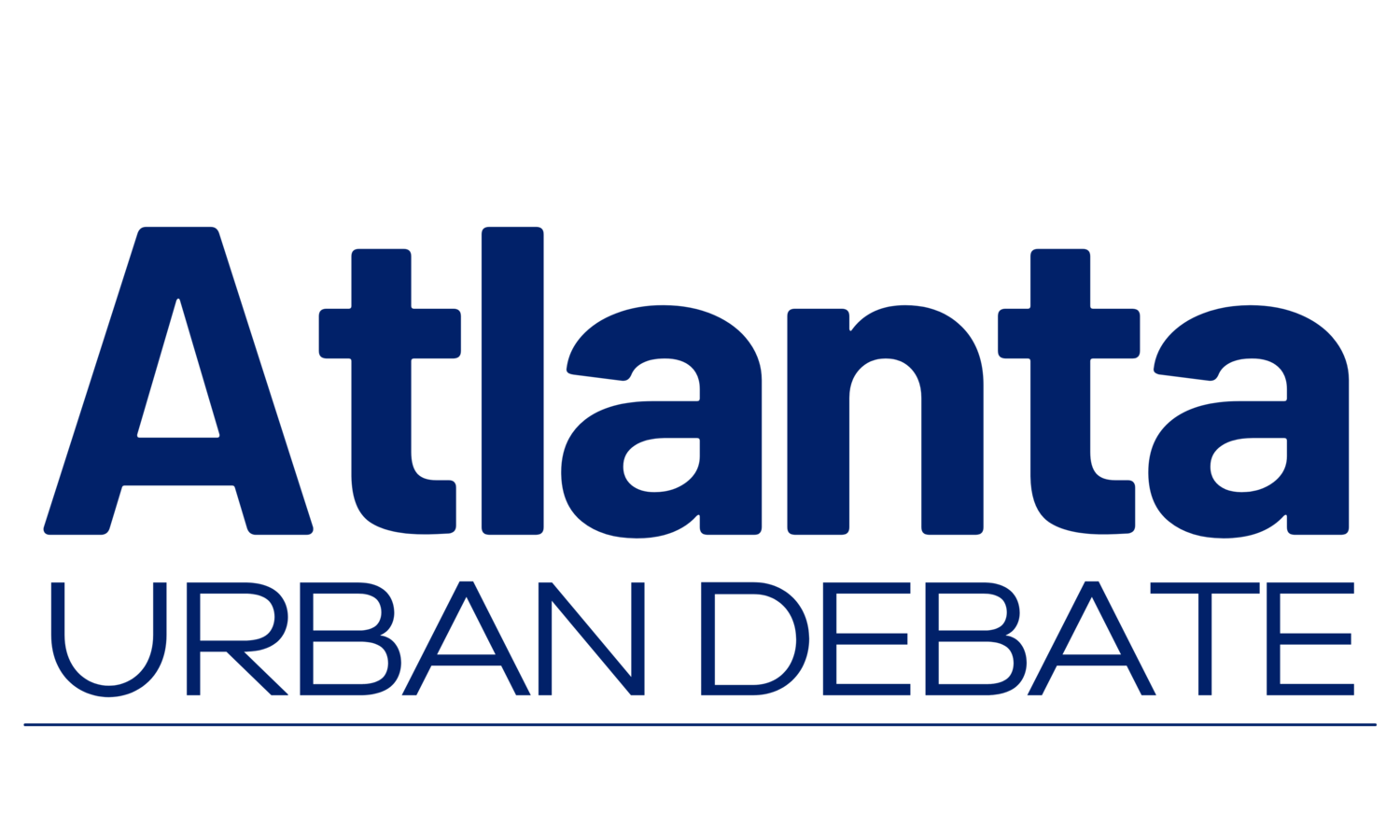The Atlanta Urban Debate League is committed to providing excellent debate education programs, services, and opportunities to diverse students, educators, and members of the community!
High School Open Curriculum Guide
Taking Notes (Flowing)
Fortunately, if you can already flow on separate sheets of paper, you’ve already almost mastered flowing. Unfortunately, the stakes are a lot higher in Open-level debate. While you’ll be familiar with every card in the affirmative or negative argument in the Novice packet, you won’t know when a team is about to read a new piece of evidence or entirely new argument. Also, since you’ll have so many flows, you should know how to cross-apply arguments between them – and how to prevent other teams from cross-applying arguments against you.
Flowing New Pieces of Evidence
In Open, you’ll encounter teams who read pieces of evidence that you may not recognize. If they follow the AUDL’s guidelines, they can do so. If they don’t, then you can point out to the judge that you don’t have an answer to the new argument that they’ve read, and then do your best to come up with analytical answers. Regardless, you need to pay attention and flow so that you notice when they’ve done so.
It’s more challenging to do evidence comparison with cards you haven’t seen before, so you should ask the other team for copies of their additional evidence. That way, you can look at it during cross-examination or during prep time to come up with questions or to prepare your answers. Remember to use ABCD!
If you’ve read a new piece of evidence, and the other team asks to see it, you should let them. If you have a paper copy, hand that over. If you are using a computer, let the other team read the evidence from your laptop.
Argument Cross-Applications
You don’t have to extend every advantage or off-case position through a full debate round. In fact, you shouldn’t – you should pick one (or two, if you’re reading a CP and DA) to focus on in your round. That means you can safely drop the arguments you don’t want to go for.
However, just because you’ve made the debate smaller by not extending an argument, that doesn’t prevent the other team from extending their arguments from that part of the debate. While most of them may not be relevant to the rest of the debate round, some of them could be. These are called cross-applications.
Here’s an example:
Let’s say you the affirmative has read an advantage about human rights. You’ve read two disadvantages, both with war-related impacts, and the affirmative reads a card that argues “Human Rights comes first,” in response to one of the disadvantages. In the block, you choose not to extend that disadvantage. The affirmative is still allowed to extend the argument from the other disadvantage, however, because it’s still relevant to the arguments you’re making!
Using Cross-Applications
Cross applications are difficult, and it’s rare that you’ll have an opportunity to make a good one. To make a cross-application, you’ll want to follow the same formula as you would with an extension, but you’ll add an extra step. Say “cross-apply the [assertion] argument that I made on the [where you originally made the argument] debate,” then explain the reasoning, cite the author, and do any necessary evidence comparison.
Preventing Cross-Applications
Although cross-applications are rare, you should always think about how the other team can use a card they’ve read – or you’ve read – in a separate part of the debate. Always answer the arguments that you think could hurt you later on, even if they’re on a part of the debate you don’t plan to extend further.
